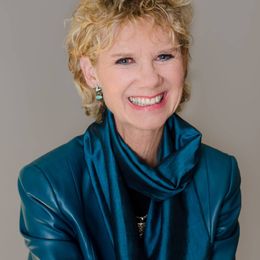The Women Facing the Greatest Retirement Risk
Why a Next Avenue money blogger was surprised by a new study's findings
Women in their 50s who are at the most financial risk in retirement are those who are married and in two-income households. That’s the surprising news from a recent report on women from the Center for Retirement Research (CRR) at Boston College.

The finding is based on research of women ages 50 to 59. According to CRR’s National Retirement Risk Index, 46% of married women in their 50s in two-income households are at risk of being unable to maintain their standard of living in retirement vs. 32% of married women that age in one-income households and 39% of women in their 50s who’ve never been married.
To be frank, these statistics were somewhat unexpected to me. I’ve spent decades reporting on the challenges surrounding women and money. And I researched the financial vulnerability of divorced and widowed women for my book Money Confidence: Really Smart Financial Moves for Newly Single Women.
Why Certain Women Are at Greatest Retirement Risk
I’d have thought — and you might have, too — that married women in two-income households have a leg up for retirement security over their single, one-income household counterparts. There are, however, several root reasons for the study’s results.
"There is always a common theme among women and it's that we don't put ourselves first."
“Two-income households typically make more, but save less,” says Cindy Hounsell, president of the Washington D.C.-based Women’s Institute for a Secure Retirement (WISER) nonprofit and a Next Avenue Influencer In Aging. “They are living a two-income standard of living and spend more on expenses — two cars and a bigger house, for instance — so I’m not that surprised. They’re having a nicer life while it is going, rather than saving for retirement. There’s a bit of denial when it comes to retirement planning.”
Married women in two-income households also often aren’t saving as much as they could in workplace retirement plans.
In half of the two-earner couples surveyed, only one earner is covered by an employer retirement plan, according to a Prudential Financial report on the CRR study (Prudential sponsored the CRR research). And the partner who is covered typically doesn’t increase his or her retirement plan contributions to offset that circumstance.
Women and Retirement Savings
The average 401(k) savings rate for one-income households and two-income, two-saver households is typically around 8% to 9% of household earnings, CRR says. But the average savings rate for two-income, one-saver households, it found, is only 4.9% of household earnings.
A new T. Rowe Price 401(k) survey said that boomer women have a 401(k) savings balance of $59,000, much less than half of the $138,000 median balance of boomer men.
The Social Security Trap
Two-income households also typically get lower Social Security benefits per tax dollar paid than one-income households, the Prudential report noted.
“The spousal benefit generally declines once the second spouse starts working, and disappears completely once the lower-earning spouse’s own benefit exceeds one-half the higher earner’s benefit, Prudential explained.
Meantime, another new report from the National Council on Aging found that 60% of women age 60 and older and approaching, or at retirement, are worried their health care costs will exceed retirement income. And only 62% of women surveyed by Allianz Life said they feel financially secure, down from 68% in 2016.
Put it all together and “this is a wake-up call for married women,” Hounsell says. “Pay attention.”
5 Tips for 50+ Women in 2-Income Households
Here are five ways women over 50 in two-income households can protect themselves from being financially at risk in retirement:
1. Plan your finances as if you were solo. “I wouldn’t be counting on anyone,” Hounsell says. “I was married for almost 20 years, and thankfully, I wasn’t putting my eggs in someone else’s basket.”
Janice Co, chief strategy officer, Workplace Solutions Group at Prudential Financial, concurs. “Both working spouses should be saving as opposed to relying on one partner,” says Co.
2. Make saving a priority. “There is always a common theme among women and it’s that we don’t put ourselves first,” Co says. “We save after all our expenses and debt is taken care of. We put off saving for our ‘future selves’ because we have mortgages, credit card debt and student loan debt, or we’re saving for college for our children. And we think time will be on our side to get to our longer-term needs…We tend to put ourselves last.”
I agree completely. Often, women over 50 are financial caregivers to their adult children or to their parents. But taking care of your own needs is an integral part of financial fitness.
If you have access to a workplace retirement plan, increase your contribution rate by just one percentage point (from, say, 8% to 9%) and try to add another percentage point in successive years. A reminder from Co: “If you’re 50 or over, you can contribute more” to a 401(k) than if you’re younger. That means you’re allowed to put in an extra $6,000 in 2019, over the standard maximum of $19,000.
“If you don’t have access to a retirement plan at work, open an IRA and contribute as much as you can,” says Co.
3. Stay on the job longer, if you can. This is my mantra. Longer work cuts the drawdown on financial assets. It could increase the time you’re covered by employer-based health insurance, reducing out-of-pocket spending on health care costs.
Increased earning years may also let you push back beginning to claim your Social Security benefit until age 70. Doing so can bump up your benefit by 8% annually.
Plus, additional years of work at older ages might offset earlier years of low or zero earnings (during caregiving years) for your retirement benefits computation formula.
Continuing to work, even part-time, can also help stave off dipping into retirement accounts, allowing them to grow, and let you sock away additional retirement funds.
4. Have regular money conversations with your spouse. A recent UBS poll of 3,652 high-net worth married women, widows and divorcees found 58% defer long-term financial decisions to their spouses or ex-spouses.
And 54% of the married women said their spouse takes the lead in handling the family's finances beyond paying bills. They didn’t participate in long-term financial planning or investing decisions. One reason: Some of the women said they thought their spouse knows more about finances.
I believe that failing to talk about your household’s finances with your spouse shows a lack of trust in the foundation of your relationship. Build your investment and retirement portfolios as a team. It keeps both of you accountable.
5. Work with a financial adviser. As I wrote in my Next Avenue column, “What Women Want in a Financial Adviser,” it’s helpful to find someone you can trust to help you manage your money. “Women want someone who they can talk openly to about their lives,” Maddy Dychtwald, an author and a founder of Age Wave, a think tank and consultancy, told me. She wrote an excellent women and money report with Merrill Lynch: “Women and Financial Wellness: Beyond the Bottom Line.”
Seek out an adviser who appreciates your financial issues, your caregiving load, your career and your money goals (which might not be the same as your spouse’s). And find one who can offer a holistic approach, not just providing investment and retirement-planning advice.
My husband and I work with the same adviser. She meets with us both separately and together and helps us stay on a solid path — solo and as a team.
As Co says: For married couples, “retirement is a joint activity so ‘saving for retirement’ should be as well."


